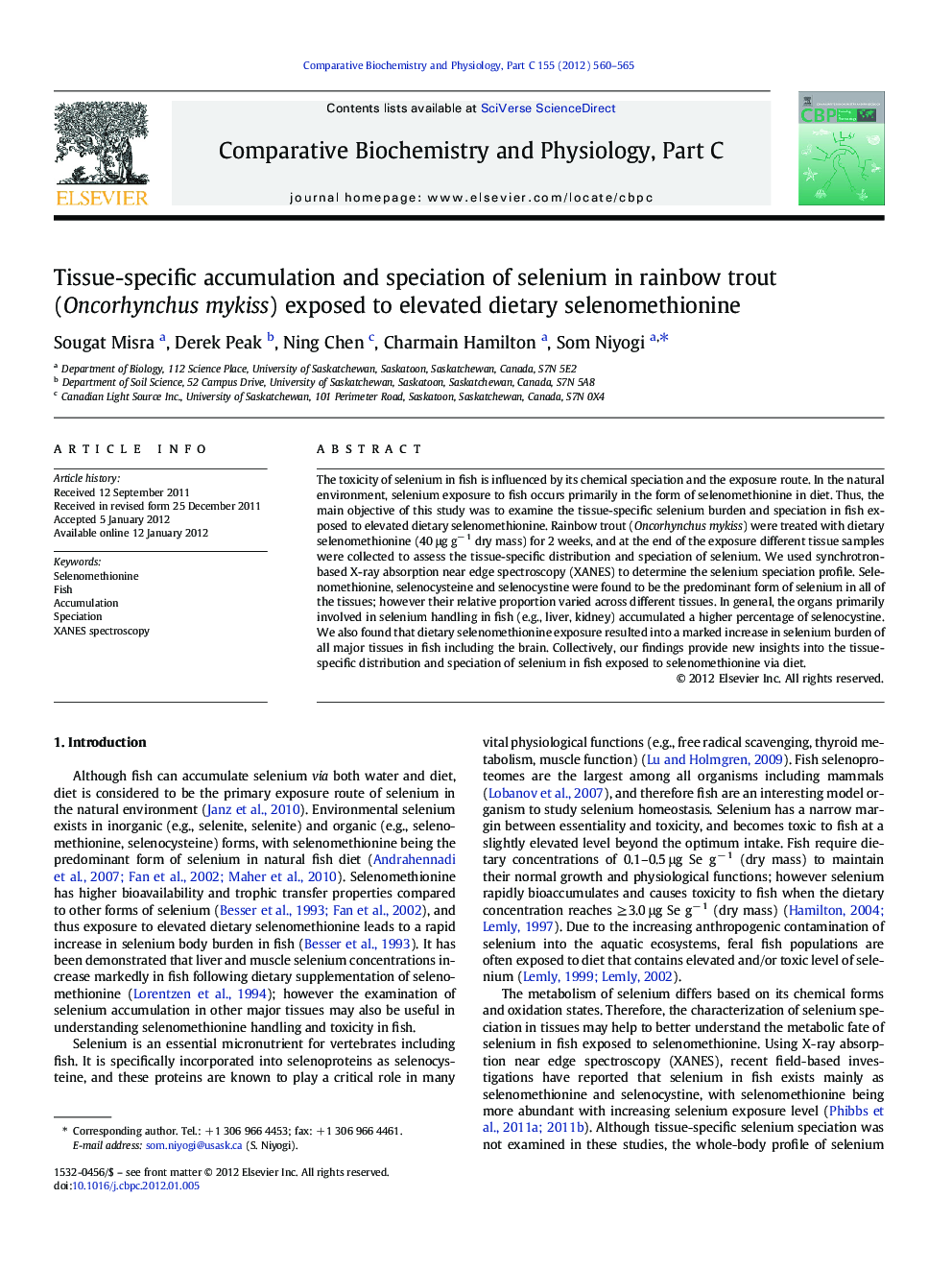| Article ID | Journal | Published Year | Pages | File Type |
|---|---|---|---|---|
| 10821738 | Comparative Biochemistry and Physiology Part C: Toxicology & Pharmacology | 2012 | 6 Pages |
Abstract
The toxicity of selenium in fish is influenced by its chemical speciation and the exposure route. In the natural environment, selenium exposure to fish occurs primarily in the form of selenomethionine in diet. Thus, the main objective of this study was to examine the tissue-specific selenium burden and speciation in fish exposed to elevated dietary selenomethionine. Rainbow trout (Oncorhynchus mykiss) were treated with dietary selenomethionine (40 μg gâ 1 dry mass) for 2 weeks, and at the end of the exposure different tissue samples were collected to assess the tissue-specific distribution and speciation of selenium. We used synchrotron-based X-ray absorption near edge spectroscopy (XANES) to determine the selenium speciation profile. Selenomethionine, selenocysteine and selenocystine were found to be the predominant form of selenium in all of the tissues; however their relative proportion varied across different tissues. In general, the organs primarily involved in selenium handling in fish (e.g., liver, kidney) accumulated a higher percentage of selenocystine. We also found that dietary selenomethionine exposure resulted into a marked increase in selenium burden of all major tissues in fish including the brain. Collectively, our findings provide new insights into the tissue-specific distribution and speciation of selenium in fish exposed to selenomethionine via diet.
Related Topics
Life Sciences
Biochemistry, Genetics and Molecular Biology
Biochemistry
Authors
Sougat Misra, Derek Peak, Ning Chen, Charmain Hamilton, Som Niyogi,
